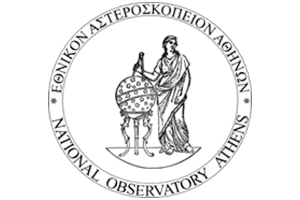
Presentation of
ATHENS NATIONAL OBSERVATORY GEODYNAMIC INSTITUTE (NOAIG)
Member Short Description
The Geodynamic Institute is one of the three Institutes of the National Observatory of Athens, which currently operates as a National Research Center and is part of the General Secretariat for Research and Technology of the Ministry of Education, Research and Religions. The G.I. is one of the oldest research institutes in Greece. The Greek state recognized early the problem with the strong earthquakes and founded in 1893 the Geodynamic Institute, which has been operating continuously since then. The headquarters of the Institute are located in Athens, on the hill of Nymphs in Thiseio.
One of the most basic and well-known activities of the Institute is the continuous 24-hour monitoring of the seismicity of the Greek area and the information of the State and the public. A similar monitoring is performed for the monitoring of tidal waves.
Thus, the “National Tsunamis Warning Center (tsunamis)” was recently established by legislation at the Geodynamic Institute in order to inform and address the risk from these sea waves.
Purpose of G.I. is the study and development of research in seismology, in the physics of the Earth’s interior, in geophysics, in plate tectonics, in volcanology, geothermal, seismotectonics, Technical Seismology, and sea seismic waves, the collection and processing of various seismological -geophysical parameters, the elaboration of research and its participation in research programs and related studies, as well as the provision of education and services to third parties.
The G.I. It also has a particularly important role to play in European seismology as it operates as a data distribution hub (EIDA).
The Network of Accelerometers that operates today at G.I. It has 163 stations, most of which are telemetrically connected to the Geodynamic Institute. Most of the network accelerometers are installed in urban complexes, taking into account seismicity and urban development. Local area networks have also been developed in selected cities, with the most important being the local area network of the greater Athens area. Also a limited number of instruments have been installed in sites of archaeological or historical interest.
In addition to the aforementioned activities, the Geodynamic Institute independently, either in collaboration with other seismological agencies in the country but also with universities at home and abroad, has to present important research activity, both basic and applied in various fields of Seismology. , Geophysics, Seismotectonics, Physics of the Earth’s Interior, etc. participating in many research programs funded by the EU, the Greek government and other public or private bodies.
The contribution of the Institute to education is great. At the Geodynamic Institute, several student diploma theses and doctoral dissertations have been prepared or are being prepared in collaboration with universities at home and abroad. Hundreds of scientists, researchers, scholars and students have used and continue to use the Institute’s data for research and studies. Since 2007 at the Geodynamic Institute has been established by Unesco a center for the study and training of scientists of the Balkan countries in catastrophic natural phenomena.


